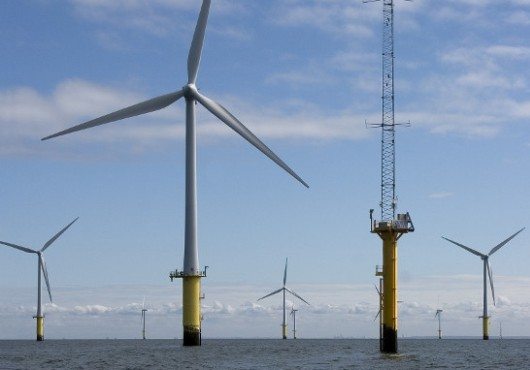Copenhagen Infrastructure Partners, the co-developer of what is likely to be Australia’s first offshore wind farm, says it is on track to create the world’s largest dedicated greenfield renewables investment fund, after raising almost half of its €12 billion target in the first round of investment.
The Danish renewables giant, which says it has a 30GW pipeline of projects in Australia, said on Monday it had raised €5.6 billion ($A9.2 billion) at the the first close of CI V, backed by leading institutional investors across the globe.
“We are in full fund-raising mode,” CIP partner Stephanie Brokhattingen said on Monday in a press call from Denmark.
“We have a strong appetite from additional investors … and (are) on track to reach the fund size, which is 12 billion euros,” Brokattingen said.
“This also means that fund five is set to become the largest product, globally, of its kind. It’s dedicated to greenfield renewables and … applies the same well tested industrial value creation approach.
“It means that we enter all our projects early, already in the development stage, and then we spend a lot of time on de-risking and optimising the projects before we start construction.”
CI V is also starting out with the largest project pipeline of any CIP fund to date, with ownership of more than 40 renewables projects at first close.
“The large seed portfolio provides significant optionality and flexibility in project selection and portfolio construction as well as investment execution robustness and visibility,” the company says.
In Australia, CIP has a rapidly growing renewable energy development portfolio, including the recently announced plan to develop a green hydrogen production hub in South Australia’s Eyre Peninsula, backed by around 14GW of solar and wind capacity.
The $30 billion project, dubbed Evergreen, aims to include roughly 4GW of solar, a massive 10GW of onshore wind and 7GW of hydrogen electrolysis capacity in the SA region bookended by the Spencer Gulf and the Great Australian Bight, and with the Gawler Ranges to the north.
Other projects of note include the Murchison Renewable Hydrogen Project proposed for near Kalbarri in Western Australia, which would include more than 5 gigawatts of wind and solar, a big battery, a 3GW electrolyser and the production of roughly 2 million tonnes a year of green ammonia.
But CIP is probably best known in Australia for its part in the Star of the South project, a 2.2GW offshore wind farm it is co-developing with Cbus and its original Australian co-founders Andy Evans, Terry Kallis and Peter Sgardelis.
Located in Australia’s first officially declared offshore wind development zone, off the Gippsland coast of Victoria, Star of the South is the nation’s most advanced offshore wind project, and is likely to be the first to be connected to the national grid.
CIP partner Thomas Wibe Poulsen says the nascent Australian offshore wind industry is getting “an enormous amount of traction” with the first seabed auction attracting interest from “all the top offshore wind developers” around the globe.
“From the development side, it’s a market which seems to be off to a very good start, even though there’s still some way to go before you have the first project spinning,” he told the call on Monday.
“I think there’s a good understanding of the importance of the broadening of the energy mix, how offshore wind will complement the other energy sources into the Australian energy mix,” added CIP’s head of Asia, Niels Christian Boehm.
“And therefore, I think there’s been a number of investors that have had a particular interest in offshore wind opportunities and the development of that market.
“That is also reflected in… the fact that we have some investors in our previous funds that have co-invested directly into offshore wind in Australia. And we see that interest continue,” he said.
“I think also investors do recognise that that we are a global leader within offshore wind and have been pioneering that since the early 2000s,” added Brokattingen.
Brokattingen says around one-third of CI V will be invested in offshore wind, with another third to be invested in onshore wind and solar and the remaining third going to “niche technologies,” which includes energy storage including batteris and pumped hydro.
Geographically speaking, the fund will again be divided into three, with one-third expected to be invested in North America, one-third in Western Europe, and one-third in Asia and Australia.
Wibe Poulsen says that in Australia, CIP can see a broader range of technology opportunities across offshore wind, onshore wind, solar batteries, “and so on.”
“We are developing a battery portfolio in the Australian market across multiple states. Pumped hydro … is another technology …[that] will be be relevant for CI V,” he told the call on Monday.
“I think we generally see [Australia] as a market which has moved really, really fast on ambition for renewable energy.
And due to the opportunities both onshore and offshore … it’s definitely a market where we see we can play a large role in the energy transition for Australia … while they are closing down their coal power plants over the next decade.”
CIP manages 11 funds and has to date raised approximately €25 billion for investments in energy and associated infrastructure from more than 150 international institutional investors.










